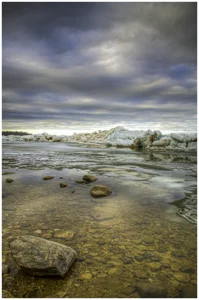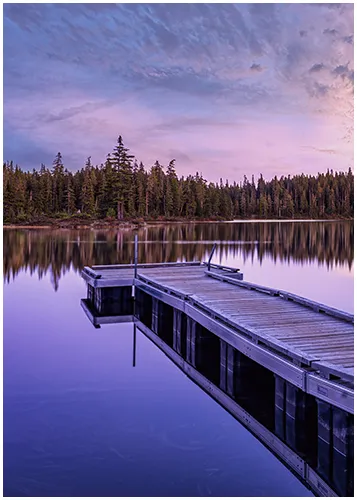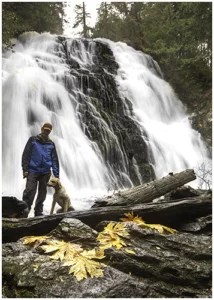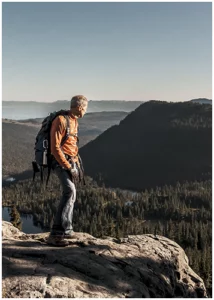
ON1 NoNoise AI Review: Eliminate Noise & Sharpen Your Photos
Are you tired of noise or grain messing up your photos? ON1 NoNoise AI could
Grand Opening & Black Friday Sale = 50% Off


For me, photography is truly magical. It simply transcends from looking at the world to truly seeing the world; it’s about freezing time and unveiling details that often go unnoticed. When it comes to landscape scenes, nothing transforms a simple view quite like reflections.
Picture yourself standing by a tranquil lake at dawn, where the water perfectly mirrors the vibrant palette of the sunrise. Water and other reflective surfaces in landscape photography hold a unique power, allowing us to perceive and convey beauty in a captivating and fresh way.
In this piece, I will share my best tips and tricks for capturing that stunning interplay of light and reflection. Are you ready to discover how nature’s own mirrors can elevate your photos?
Reflections in your landscape photos can add depth and symmetry to an otherwise boring photo.
Adding natural reflections to your photos can make them mesmerizing. When shooting reflective surfaces like water or glossy terrain, try highlighting symmetry and textures to add depth to your landscape. They can also bring a sense of calm and wonder to your photos.
Use reflections to guide the viewer’s eye to your work
There are many reflective surfaces to try in landscape photography:
To capture clear water reflections, follow these techniques:
Whether it’s a wide lake or a small puddle, the right approach you can turns simple scenes into beautiful symphonies of light and shadow.
Looking to stretch your budget? We’ve got good news! Use the SPECIAL code whosaid15 for an extra 5% off
Transforming landscapes with mirror images can add a surreal and impressive element to your photography. The following techniques can enhance your nature photography in creative ways.
I can’t say this enough composition is key to achieving the best reflections. Plan your shot to include compelling subjects that work well when reflected. Use leading lines and the rule of thirds to guide the viewer’s eye towards the reflection, enhancing the overall effect.
Reflections can make your landscape elements pop. Lakes, ponds, and puddles act as mirrors. Try different camera angles to make your photos stand out. Try a long exposure to smooth out the ripples in the water.
I look for reflections not for their appearance, but for the feelings they evoke: a serene balance of truth and illusion.
...Bob
Now that we understand the visual power of reflections, let’s move past the basics. For me, truly stunning reflection photography involves deliberate, often counter-intuitive compositional choices that turn a lovely scene into a powerful piece of art.
You’ve probably heard the classic photography rule: never place the horizon dead centre. Well, I’m here to tell you to break that rule! When a reflection is perfectly crisp and the subject is compelling, a symmetrical split is the most powerful technique you can use.
This involves placing the horizon line (where the real world meets the reflection) exactly in the middle of your frame. This maximizes the mirror effect, creating an undeniable sense of perfect balance and visual poetry.
Believe me, the significant effect of achieving a one-to-one mirror image justifies abandoning the Rule of Thirds.
Occasionally, the most exciting part of a reflection isn’t the clear mirror image, but the distortion. I often focus on the texture of the water when it has soft ripples or movement.
By composing the shot to include only the wavy, distorted reflection, perhaps filling 2/3 or more of the frame with the water, I transform the landscape into an abstract piece.
This allows me to emphasize the colours and lighting while ignoring the physical subject, turning a standard reflection shot into something dynamic, creative, and completely unique.
Tiem to tlk about choosing the right camera settings for stunning reflective images.
I always start in aperture priority mode and only switch to manual mode when I need to. I start with an aperture between f/8 and f/11 for sharpness. Monitor your shutter speed and opt for a low ISO for sharp reflections.
Check your settings often to adjust as the light changes. This ensures the best results.
Monitor your exposure and watch your histogram as you shoot. If need be take multiple shots for bracketing exposures. It gives you more options later in editing.
Filters like neutral density and polarizers are vital for water reflections. A polarizer reduces glare and boosts colours. This makes reflections clearer.
Neutral density filters let you take longer exposures. This is great for smooth water.
| Setting | Purpose | Adjustment Tips |
|---|---|---|
| Shutter Speed | Controls the exposure duration | Use a slower shutter speed for smoother reflections |
| Aperture | Determines depth of field | Set to f/8 for balanced sharpness |
| ISO | Adjusts camera sensitivity to light | Keep it low (100-200) to minimize noise |
| Polarizer | Reduces glare and enhances colours | Rotate to achieve the desired effect and find reflections that enhance your photograph. |
| Neutral Density Filter | Allows for longer exposures in bright light | Choose ND strength based on lighting conditions |
I hope this post hasn’t just been informative, my goals is to spark some serious excitement for reflection photography! I’ve armed you with all my best key points. Now, it’s all up to you to take action, engage in constant experimentation, and hone your technique. I can’t wait to see what amazing mirror images you create!
Whether you’re capturing the perfect symmetrical split on a tranquil lake or focusing on the abstraction of a textured surface, remember that stillness, composition, and the right camera settings are your keys to success.

Are you tired of noise or grain messing up your photos? ON1 NoNoise AI could

Every time I get ready to photograph a waterfall, I feel a rush of excitement.

If you’re looking for an easy hike, well… this hike is not it! Most of